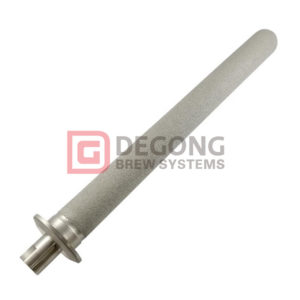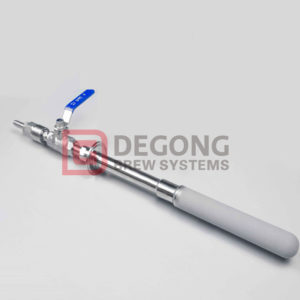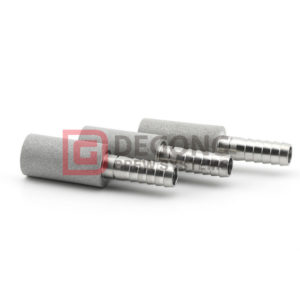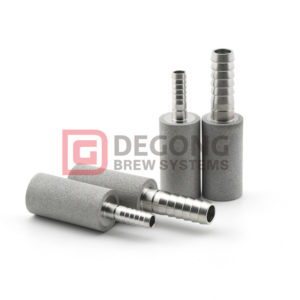Description
Beer Carbonation Stone
Carbonation Stone, a device used to diffuse carbon dioxide into beer. It may be made of naturally porous stone, porous ceramic, or finely sintered stainless steel. Usually used inside a brewery bright tank or a brewpub serving tank, the carbonation stone is a hollow cylinder, capped at one end, into which carbon dioxide is forced under pressure. The CO2 diffuses through the stone, emerging on the exterior in very small bubbles. Under pressure, the small bubbles of CO2 dissolve into the beer before they can reach the surface. Carbonation stones may also be used in-line. A carbonation stone can be used to carbonate flat beer, to add CO2 to beer with inadequate carbonation for packaging or service, or to scrub dissolved oxygen from beer or water. Whether made of stone, ceramic, or sintered steel, the devices are colloquially known as “stones.”
8″ Carbonation Stone
Some people like to speed up the process of force carbonating beer by putting extra high pressure on the keg, but a more effective and precise practice is to use a carbonation or diffusion stone.
Rocking your keg with the low pressure gauge set at 30 PSI may get the beer carbonated in one day. This may also, however, cause you to end up with over carbonated beer, which can be a hassle. It can take longer to get the carbonation out of solution than it look to force it in.
A better solution for speeding up carbonation would be to use a Carbonating Stone, also known as a diffusion stone. This is a piece of stainless steel, perforated throughout with a huge number 0.5 – 2 micron holes. Keg lids fitted with a diffusion stone are also available.
How to Use the Diffusion Stone
The “Stone” sits inside the keg near the bottom.
A hose barb attaches it to a length of tubing (generally about 2 feet of 1/4” ID thick wall vinyl hose) which is affixed to the short downtube under the “in” or “gas side” post.
When the CO2 is connected, it sends a tremendous number of gas bubbles out through the beer. The miniscule bubbles create a huge amount of surface area to help absorb CO2 rapidly into the beer. This is actually a miniature version of a device used by commercial breweries everywhere.
Carbonation should be virtually instantaneous, though the manufacturer recommends carbonating your beer at least a few hours before serving.
Beer Carbonation Stone
Want more information or would like to receive a quote?








